By: Paulo Andres Vallejo
Edited by: Pedro Gomez
01/18/2024
Introduction
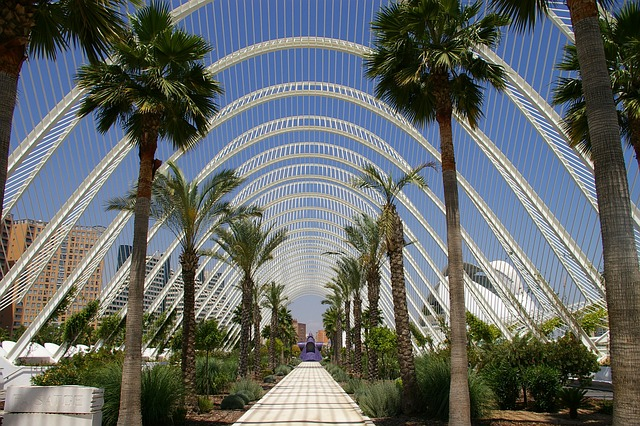

Food enthusiasts have found Valencia, Spain, a haven known for its stunning architecture and lively culture. For every palate, there is a delightful experience awaiting as the local cuisine reflects a perfect blend of tradition and innovation. This blog will explore the best tasting menus and dining experiences that make Valencia a gastronomic paradise.
Paella: A Culinary Masterpiece & Its History
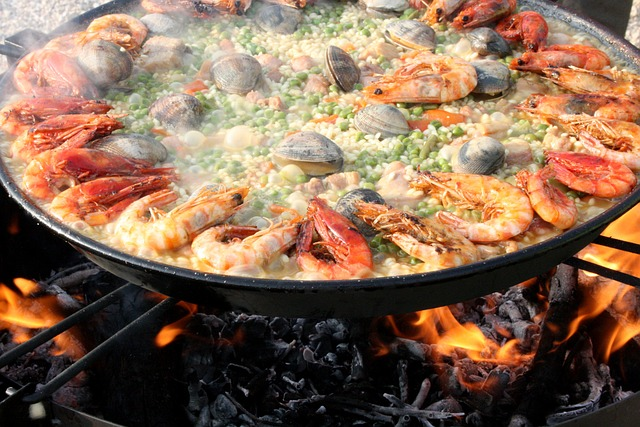
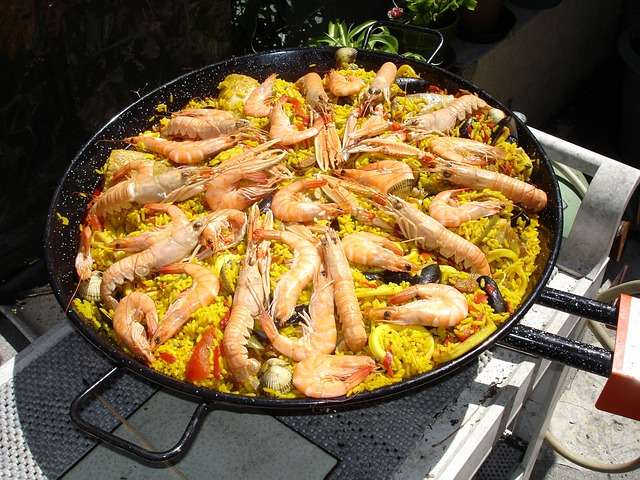
Paella is a word that comes from the Old French word ”paella”, which means pan. Traditionally, Spaniards cook paella on giant pans. Paella originated in the mid-19th century and symbolizes Spain’s culinary prowess. This iconic dish originated in Valencia, Spain. The ingredients have always adapted to local availability. Still, traditional Valencian paella features any of these ingredients: rabbit, chicken, chorizo, seafood like mussels and prawns, local green beans called bajoqueta and tavella, other vegetables, and the essential saffron-infused Calasparra rice. You can find the best places to eat paella in Valencia at Spaininspired or you can search for a paella cooking class and do it yourself.
- El Raco de la Paella – Average price €20 – €40 per person.
- Restaurante Levante – Average price €15 – €45 per person.
- Casa Carmela – Average price €40 – €70 per person.
Other Valencian dishes:
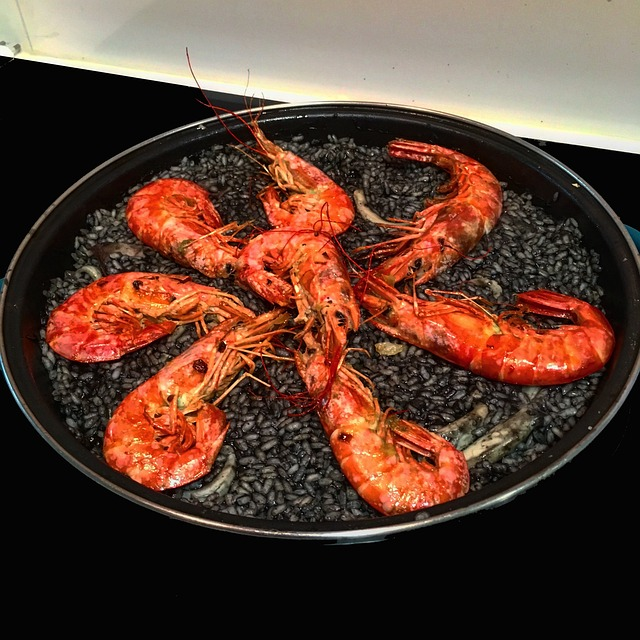
Arroz Negre, or Black Paella, is made with Spanish bomba rice or white rice and a combination of crab, shrimp, prawns, squid, and cuttlefish. The rice’s black color comes from the black ink the squid releases, which enhances the rice’s flavor. Other ingredients added to this dish include green cubanelle peppers, garlic, onion, sweet paprika, olive oil, lemon, white wine, saffron, and seafood broth.
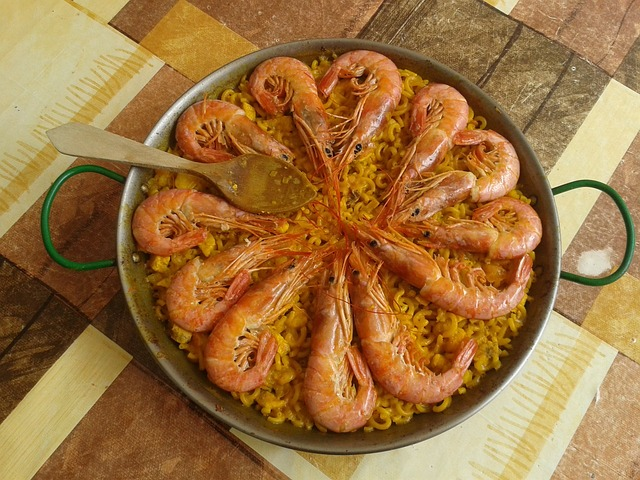
Fideuà is made with any combination of fideus noodles, Italian fedelini or spaghettini, olive oil, shellfish broth, rockfish, monkfish, cuttlefish, cod, snapper, halibut, squid, shrimp, crayfish, mussels, clams, lemon, large bay leaf, thyme, tomato paste, cayenne, parsley and orange zest.
Esgarrat is made with any combination of grilled red pepper, grilled tomato, baked eggplant, cured cod, mojama, garlic, olive oil, boiled eggs, salt, and black olives.
Arroz al Forn or Horno is made with lean pork, blood sausage or morcilla, bulb garlic, tomatoes, beef broth, potatoes, rice, cooked garbanzo beans, and olive oil.
Arroz con costra is made with rib meat, rabbit, chicken, olive oil, rice, water, blood sausage or morcilla, red sausage, white sausage, saffron, salt, and soufflé eggs.
Tapas: The Culture of Small Bites, Big Flavors & Its History
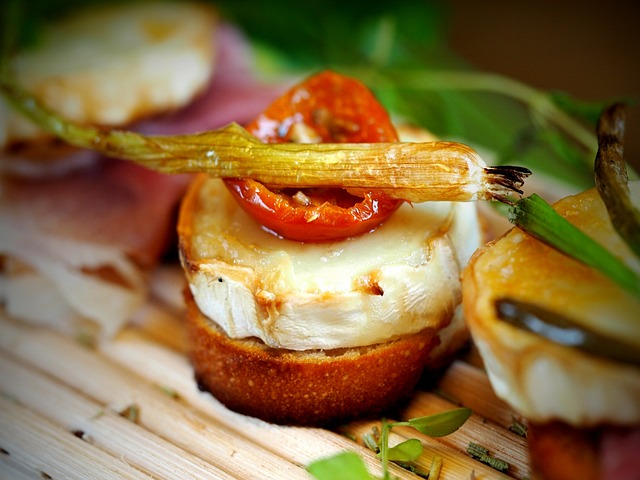
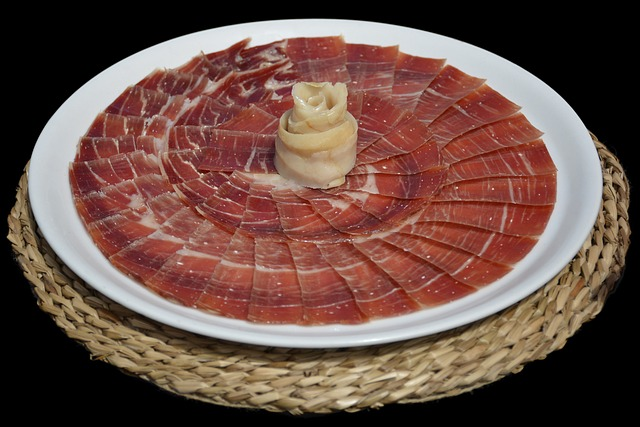
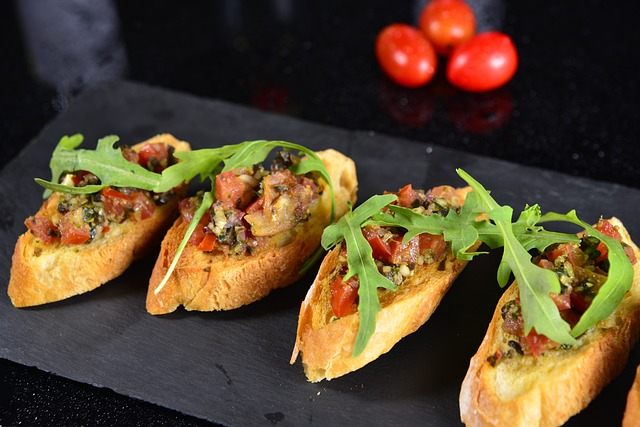
Indulge yourself in Valencia’s electric culinary atmosphere of tapas bars, where locals and visitors alike can mingle and chitchat while savoring different small bite-sized delights. Originating in the 13th century during the reign of King Alfonso X of Castile, the king decreed small snacks to be served to patrons at bars to prevent over-intoxication. This tradition with deep historical roots has evolved into the culinary art of tapas. Tapas encourages sharing and socializing, which are experiences that many people enjoy today. At Spaininspired, you may find the best tapas and tapas bars in Valencia.
- Clann Bar – The average price per tapa is €9 – €23.
- Boatella Tapas – The average price per tapa is €1.90 – €25.
- Taberna Antonio Manuel – Average price per tapa is €2.50 – €23.50.
Sweet Valencian Temptations & Delights
Valencia has a couple of yummy goodies for those with a sweet tooth. Valencia is known for:
Coca De Llanda is made with flour, sugar, eggs, milk, sunflower seed oil, olive oil, baking powder or baking soda, salt, sprinkled powdered sugar, sprinkled cinnamon, and lemons or oranges for zest are optional.
Flan Valenciano is made with eggs, milk, vanilla, and sugar. Pumpkin flan is also available during pumpkin season.
Bunyols is made with all-purpose flour, baking powder, butter, water, sugar, salt, eggs, lemon zest, vegetable oil, and powdered sugar.
Pastissets De Moniato is made with baked boniato (sweet potato with white flesh), honey, lemon, cinnamon,
Arnadí is made with pumpkin or sweet potato pulp, sugar, egg yolks, ground almonds, whole toasted pine nuts, cinnamon, almonds, and grated lemon rind.
Turrón is made with honey, sugar, eggs, and either almonds, hazelnuts, or pistachios.
Horchata & Fartons
Horchata is a refreshing drink made from tiger nuts, almonds, and sugar, and sometimes has a touch of cinnamon and lemon. Tiger nuts are edible tubers. Edible tubers are bulbous stem roots that grow underground and provide nutrients to a grass-like plant called yellow nutsedge. It originated in northern Africa in the 11th century and spread into the Iberian peninsula by the 13th century. They are found commonly in Africa and Spain.
Fartons are an elongated sweet pastry glazed with sugar. Together with horchata, they form what is known there as a classic Valencian combo. Locals and tourists indulge in this delightful pairing, especially during the scorching summer months. However, fartons also go with hot chocolate or caffe latte.
You can find the best places to have artisanal horchata and fartons in Valencia, like Horchateria Els Sariers, Horchateria Daniel, and Horchateria Santa Catalina at Valenciarevealed and Culturetrip.
Instagram – @global_financial_planner
Dining Experiences: From Rustic Taverns to Michelin Stars
Valencia offers diverse dining experiences, from rustic taverns to world-class Michelin-starred restaurants. Dive into the heart of El Carmen, where narrow streets are lined with cozy bistros serving authentic Valencian cuisine. For a more upscale experience, explore Michelin-starred restaurants where culinary innovation meets traditional flavors.
- La Cabila – Average price €28 – €58.
- Forastera – Average price €15 – €34.
- Quique Dacosta’s – Average cost is between €275 and €445 in the low season and between €295 and €495 in the busy season.
Top Valencian Restaurant Bars & Lounges:
- Sagardi – Average price €30 – €60.
- Cafe de la Bourse – Average price $30 -$49.
- Birra & Blues – Average prices €10 – €40.
Valencia Wines: A Toast to Tradition
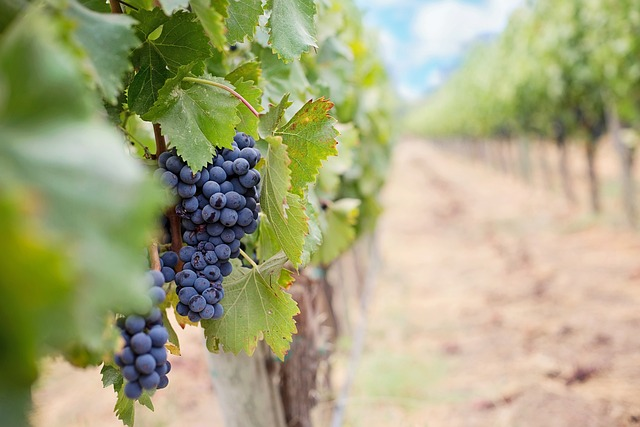
No gastronomic journey is complete without a local wine tour. The tradition of winemaking in Valencia dates back to the Roman times. The region’s unique climate and diverse landscapes contribute to the production of exceptional wines. Over the centuries, Valencia’s winemakers and wineries have perfected their craft, producing wines that reflect the rich terroir of the region. Valencia’s wine regions produce various wines, including the renowned reds made from Monastrell grapes. Sip a glass of Bobal or Valencia’s signature white wine, Merseguera, to complement your culinary adventure. However, wine lovers, please be aware that Valencia’s touristy and upscale areas will charge more than others.
- The average glass of local wines ranges from €2 – €4.
- The average bottle of local wines ranges from €5 – €10.
Local Valencian Wines
White wines:
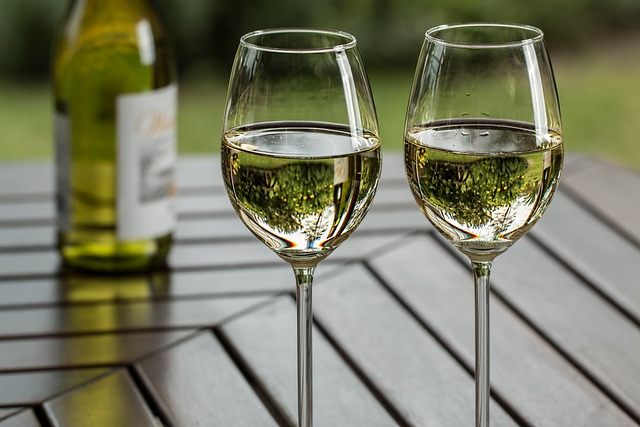
- Daniel Belda Verdil Blanc Jove, Valencia, Spain: score 87, €3
- Bodegas Murvierdo Estrella Frizzante, Valencia Spain: score 88 €5
- Vina Tendida Moscato Bianco, Valencia, Spain: score 87, , €3
Red wines:

- Bodegas Muvriedro coleccion Tempranillo, Valencia, Spain: score 87, €3
- Juan de Juanes Vendimia Plata Cabernet Franc, Valencia, Spain, score 87, €3
- Juan de Juanes Vendimia Plata Petit Verdot, Valencia, Spain: score 87, €3
Wine & Tapas Tasting Tours in Valencia
Valencia’s rich history and extensive acres of vineyards make it a perfect place for wine tourism. Wine tours provide a local wine list experience that allows guests to discover new flavors and learn about the wine’s brand. These tours can guide you to hidden gems like wine bars, local food, and friendly faces. Some places require reservations, or local guides start tours at a particular time, so call before visiting that winery.
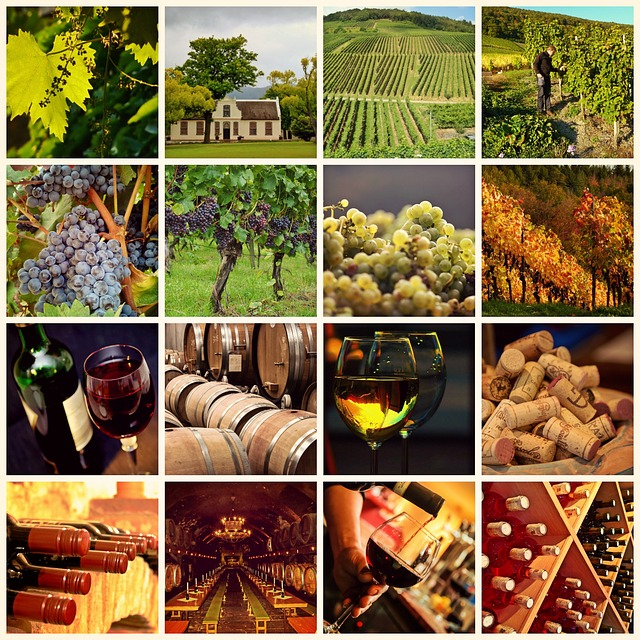
- Valencia Old Town Tour – with wine and tapas from $83.
- Valencia City of Arts and Sciences – with rooftop wine tasting and tapas from $95.
- The Art Wine House – with wine from $53.
Monthly Average Food Costs
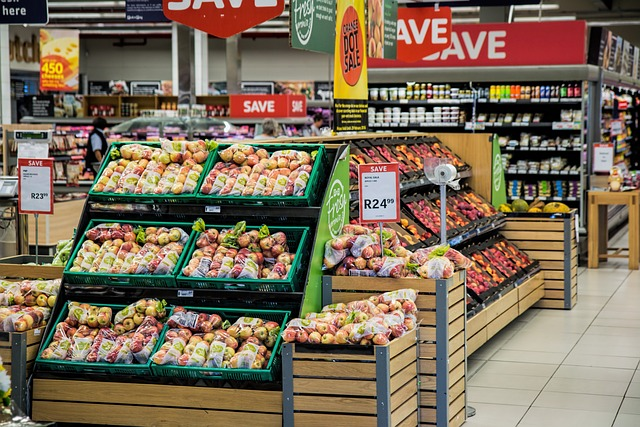

Whether eating on a budget or going all out, planning will help you get the most for your euros. You can eat at cheap local restaurants, mid-range restaurants, fine dining, or cook at home. Depending on how you budget your meals, the average monthly cost for food in Valencia, Spain, is between $280 and $1,653. Interestingly, the food in Valencia, Spain, is 30% cheaper than in New York. Here is a better breakdown of monthly food expenses:
- Local diners – $218 – $330
- Mid-range restaurants – $441 – $651
- Fine dining – $657 – $928
- Groceries – $218 – $821
- Street food (per meal) – $2 – $22
Valencian Crops & Ingredients for Cooking

Crops
In addition to the usual vegetables and fruits you can find in the USA, Valencia grows diverse crops you may or may not have heard about. Some of these local ingredients you may use for cooking include persimmons, kakis, table grapes, runner beans, chard, endive, leek, chufa, thistle, turnip, and locust bean.
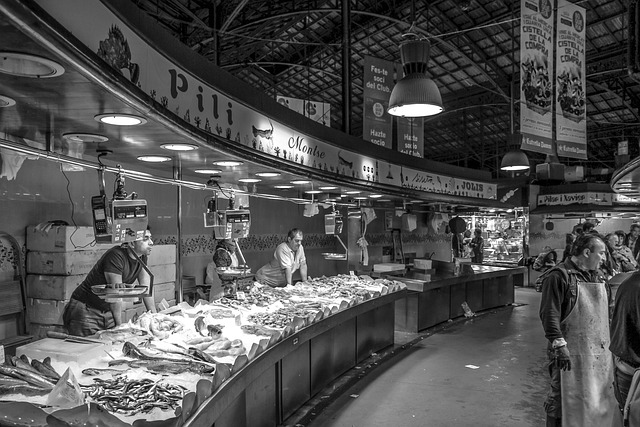
Seasonal Fish & Shell Fish
If you like fishing or eating fish, these fish and shellfish are available depending on the seasons. Those are eel, bonito, little tunny, pandora, sea bream, squid, blue crab, ray, spotted flounder, striped seabream, gilthead, small-spotted catshark, greater amberjack and mullet, octopus, cuttlefish, bream, mackerel, red prawn, anchovy, greater fork-beard, blue whiting, flying squid, rabbitfish, and black ruff, red shrimp, horse mackerel, sardine, gray mullet, horse mackerel, clóchina, bluefish, tellina, mahi mahi, little tunny, bonito, red mullet, and gilt.
Fund for European Aid
In an emergency, the European Commission created the Fund for European Aid, providing food for needy people.
Financial Implications for Early Retirement
It is essential to consider several factors when planning to retire. A CFP® Professional can help you start building your retirement plan. If you are not working with one already, Brickell Financial Group specializes in working with Americans interested in retiring abroad.
Furthermore, working with a Certified Financial Planner™ Professional can help determine your retirement readiness and how critical decisions like retiring abroad would impact your budget, cost of living, and quality of life. If you are not already working with a trusted financial advisor, you can learn more about me and my advisory firm, Brickell Financial Group.
If you enjoyed this blog and want to read more blogs or related ones, please visit and subscribe to:
Global Financial Plan’s blog
